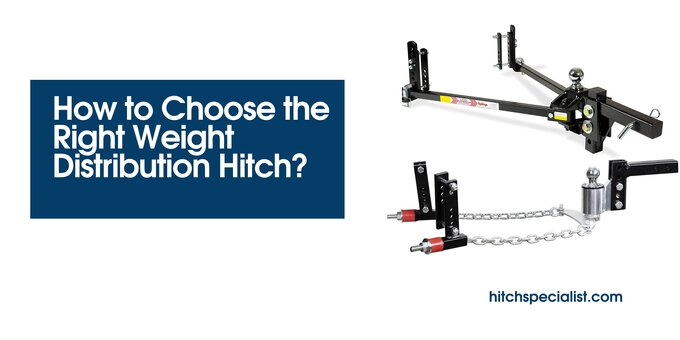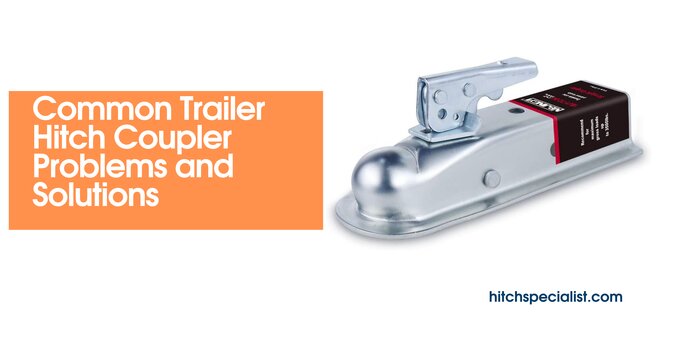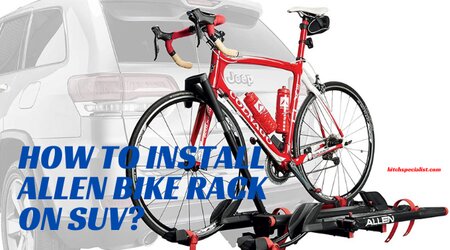
Weight distribution hitches have now become necessary with upgraded trailer models and road infrastructure. Many new users think one weight works for every type of trailer or van. But you need a weight distribution hitch that matches your trailer’s tongue weight.
Tongue weight means the rear axle weight when your loaded trailer sits still before driving. There is no one size fit when it comes to weight distribution hitch. Even a slight weight miscalculation can lead to an accident.
To make it clear, we have answered all your questions and have put together some detailed answers below:
How do I know if I need a weight distribution hitch?
If your tow vehicle is sagging or the front axle is going upwards while the rear axle stays in contact, that’s a clear sign you need a weight distribution hitch. Moreover, suppose you are towing heavy trailers or caravans. In that case, the weight distribution mismanagement can cause steer control loss.
That is also a clear indicator that you need a weight distribution hitch. We advise anyone towing equal to or more than 5,000 lbs to install a weight distribution hitch. Below that weight range, your tow vehicle should do fine with a sway control bar or tow bar.
Most importantly, if your trailer’s weight is 50% or more than your towing vehicle’s weight, you must get a weight distribution hitch.
Also read: Difference between Weight Distribution Hitch and Sway Bar
Types of weight distribution systems
The types usually depend on the weight distribution systems, spring arms, and receiver type. Spring arms are usually metal parts that distribute the tongue weight and add leverage to the tow vehicle’s front axle.
However, brands like Andersen, Blue Ox, Equal-I-Zer, and more have brought other patented technology to distribute the weight. These hitches work without using any spring arm and chains.
Spring arms
Round bar: Round bar weight distribution systems connects their arms under the hitch head and then curve back up to the ground. They remain in a parallel position. However, these are unsuitable for the lower trailer because they create ground clearance issues.
Trunnion bar: This weight distribution system takes a straight back turn from the hitch head to the ball connection. So, it’s great for lower trailers as it gives more ground clearance. The spring arms of trunnion bars are square, and sway bars are straight. Also, they don’t need any extra clips.
Receiver class
The trailer receiver class also differentiates weight distribution systems. There are from 1 to 5, and the weight differs from 2,000 lbs to 10,000 lbs. We have already covered it in our Types of trailer hitches and Hitch classes: A Complete Guide. Feel free to check out to know the details.
Hitch ball sizes

A hitch ball is an attachment with a ball shape that connects a hitch to a trailer. It allows a trailer to pivot and also helps to tackle trunks and even control sway. Hitch ball rating also affects the weight distribution system. It is as essential as receiver hitch class rating.
Light: 1-⅞ inches hitch ball (100 to 800 tongue weight)
Medium: 2 inches hitch ball (800 to 1000 tongue weight)
Heavy Duty: 2-5/16 inches hitch ball (1000+ tongue weight)
How to choose the correct weight distribution hitch size?
1) Calculate tongue weight
For example, we own a Texa Mantis Trailer 2017, with a gross trailer weight of 4200 lbs. After we load our stuff, the loaded weight becomes around 5,000lbs+. You can measure weight using the Haulgauge or do it manually. The thumb rule is to measure weight after it’s loaded with cargo. Then we find the tongue weight, which is 10 to 15% of the total gross trailer weight. For our Texa, it is 420 lbs.
2) Finding the right hitch
For a 420 lbs tongue weight, we need at least a 500lbs rated weight distribution hitch. Remember, the gross trailer weight rate can vary depending on the trailer you tow. For travel trailers, 80lbs more than the actual tongue weight is ideal.
However, for haulers, flat decks, and more, you must choose a weight rate of at least 100 lbs.
We went for Equal-i-zer 4-Point Weight Distribution System for our trailer because it can tow from 200lbs to a maximum of 600 lbs.
3) Trailer ball
The trailer ball size is also an important thing to consider because the ball size determines the turns you take. Your trailer and weight distribution hitch need a suitable ball to adjust completely.
For example, Equal-i-zer has a universal 2 inches hitch ball that works with every tongue weight. If your trailer’s tongue weight is 900lbs, and you tow it with a 1-⅞ inches hitch ball, then the weight distribution hitch will malfunction.
You can also watch this video for more information:
Conclusion
Suppose your trailer’s tongue weight changes after being loaded. In that case, it’s best to go for universal hitches like Andersen, Equal-I-Zer, and Curt. These and more brands offer weight distribution hitches ratings, which are easy to understand. For more help, you can check our other guide articles and make sure to take help from a hitch expert.
Related topics:



